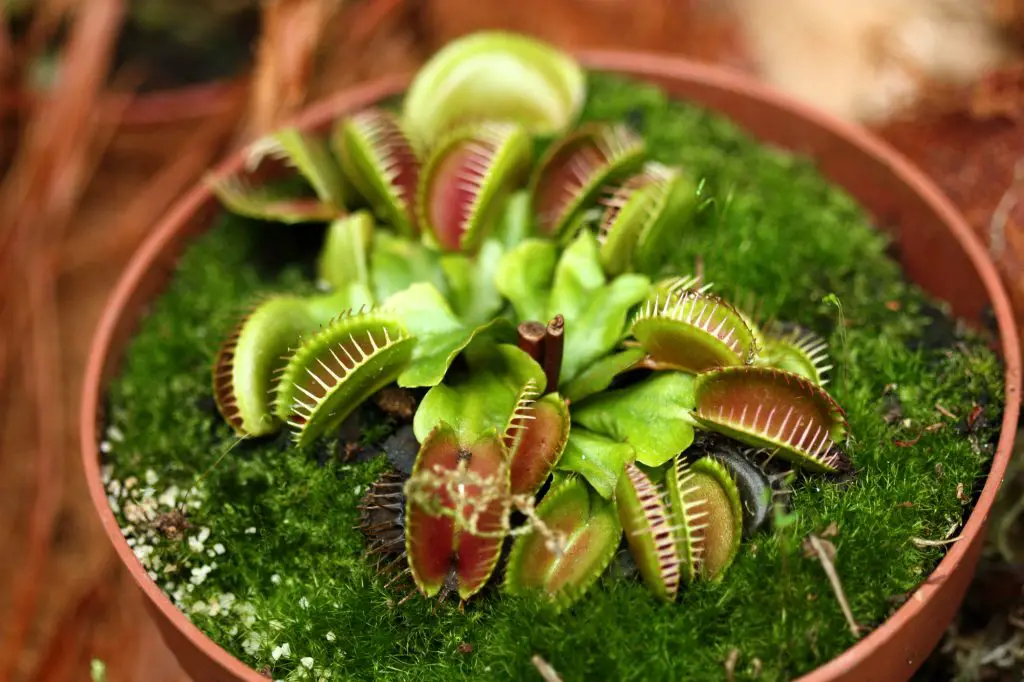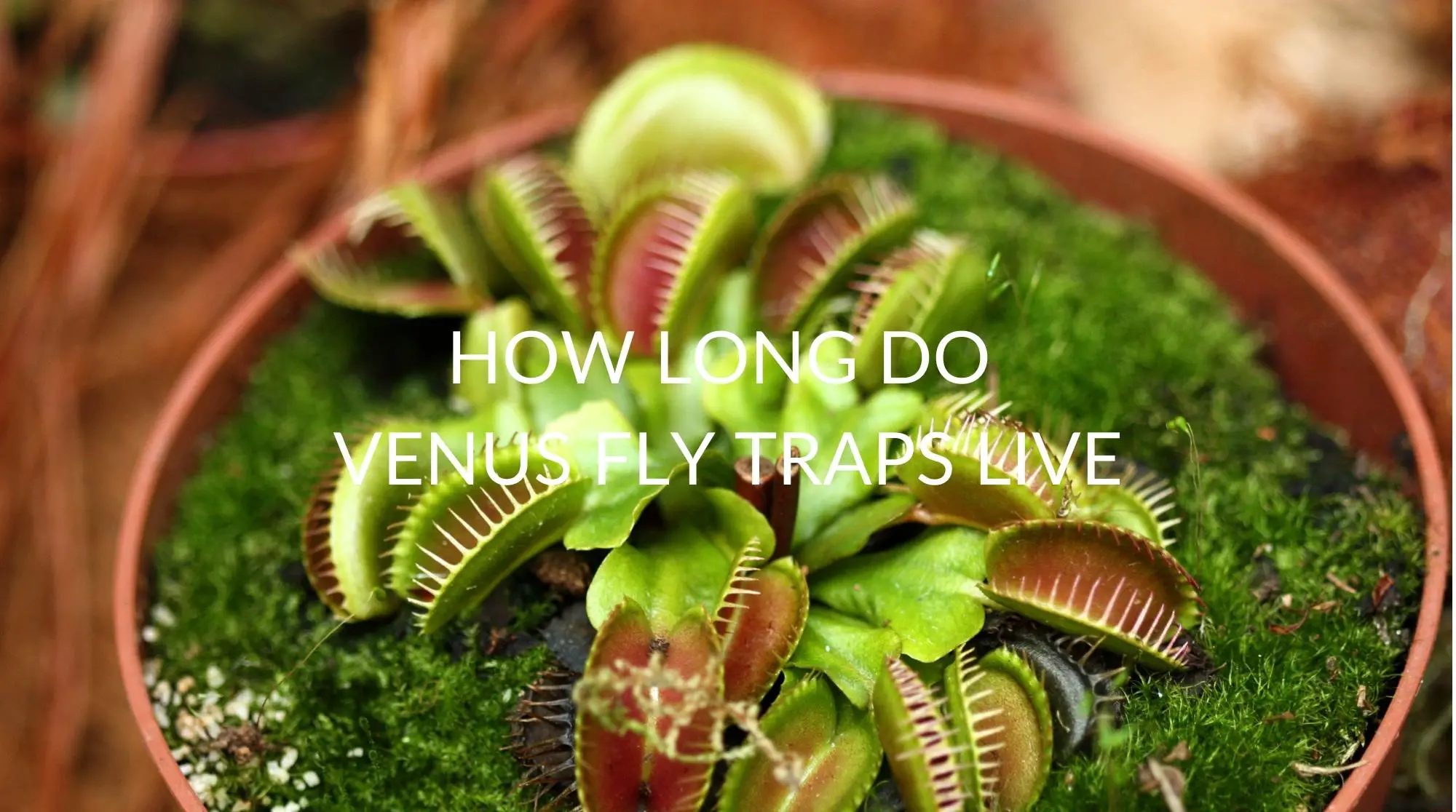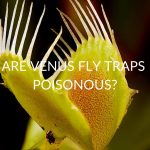Venus flytraps are like something out of a science fiction movie, and they have fascinated many for a long time. If you’re interested in getting one, you might ask, how long does a Venus flytrap live for? The answer is up to 20 years, but it depends on some factors that we will explain below.
Well, maybe you’re not trying to create a venus flytrap like the one in the classic movie Little Shop of Horrors, but a flytrap is a neat plant worth having. Discover here how to take care of your venus flytrap and learn some more interesting facts about these fascinating carnivorous plants.
How Long Do Venus Flytraps Live?
What is the coolest thing about a venus flytrap — that it’s carnivorous, meaning it “eats” meat! Such a unique characteristic has caused a fascination with the plant. The flytraps live mostly through photosynthesis like most plants; however, they also obtain nutrients through the digestion of insects. Flies and other insects provide nutrients that the plant can’t necessarily find in the soil, especially indoors.
Venus flytraps are perennial plants which mean they live longer than two years. This means the flytrap is already out of the category of plants, like annuals, which are short-lived and bloom only once.
Venus flytraps have been found to live up to 20 years in the wild and indefinitely when taken care of properly indoors.

How Long Do Venus Flytraps Live Indoors?
When it comes to your home, it is not uncommon to have pesky flies get in and annoy you. What better way to get rid of them and create some plant symbiosis in your home than adding a venus flytrap? When planted indoors are taken care of properly, these plants can live indefinitely.
Venus flytraps eat flies, small spiders, ants, and grasshoppers. Pretty much anything that lands in the trap and triggers it shut will be subject to the digestive fluid the plant has.
Tips for your indoor Venus flytrap
Here are a couple of tips on how you can take care of this plant in your home. You will want to make sure the plant has good drainage and soil with sand and peat moss. It is recommended to make sure they get 4-12 hours of sunlight and are watered with distilled water.
These plants do go dormant, in which case you’ll want to give them less water and direct sunlight. If you notice certain parts of the plant are dying, you should prune them. It is also important not to let the Venus flytraps flower. Lastly, you want to resist the obvious urge to poke or play with the plant because this messes with the plant’s natural cycle and abilities.
If you follow these steps, you could have a beautiful Venus flytrap living for as long as you want.
How Long Do Venus Flytraps Live Outdoors?
The Venus flytrap is native to North and South Carolina. These plants grow in bogs, and these regions have sandy soil with high moisture content but not a ton of other nutrients. Outdoor flytraps have been found to live up to 20 years in their natural habitat.
Indoor and outdoor Venus flytraps grow the same. They are somewhat unique because each leaf is independent and can grow its own root system. Those new leaves will continue to come up, and older leaves will die and create an underground network for the plant. Also, the plant clones itself and divides into smaller plants while maintaining the original central plant.
It is important to note that with indoor flytraps, you will want to avoid flowering, but for outdoor Venus flytraps, flowering and pollination will occur naturally. If conditions outdoors are right, these amazing plants can thrive for up to 20 years by photosynthesis, nutrients from the sandy soil, and from the flies they eat.
How To Keep Your Venus Flytrap Alive For A Long Time
You will want to make sure to properly care for your indoor or outdoor plant in order to keep it alive for a long time. Take care to not let the roots rot, prune the dead or dying leaves, and repot them as they continue to grow.
Proper Plant Care
Even though this plant likes moisture, you want to make sure that your flytrap is in a pot with drainage holes so that it doesn’t get mildew or root rot. The Venus flytrap will thrive if the soil you give it is similar to where it is found in the Carolinas. You should use a one-to-one mixture of moss and sand.
The plant will love frequent watering to keep up the moisture, but just enough to make sure the soil stays damp. Like all indoor plants, make sure to take into consideration sun, heat, and time of year in your watering frequency.
Wondering whether Venus Flytraps are poisonous to cats?
In addition to water, you can also “feed” your plant those small insects it craves for nutrients! Outdoor plants should have no problem getting their own insects, but if your indoor plant seems a little dull, you can feed it ladybugs, moths, mosquitoes, small spiders… and of course, flies.
Consider Planting Your Venus Flytrap in a Terrarium
While these plants can do well just on a window sill or a cabinet, you may want to consider adapting their environment a little better. Consider planting your Venus flytrap in a terrarium. You will want to use a somewhat open terrarium versus a fully closed one so that the flytrap still has access to insects landing in the trap.
Keep in mind that a terrarium would certainly keep your plant alive for a long time because it simulates the natural environment of moisture-rich, sandy soil and air.
How Hard Is It To Keep A Venus Flytrap Alive?
A Venus flytrap is an easy plant to take care of; indoor plants aren’t that hard to take care of, and outdoor plants are even easier. We have mentioned above some of the proper plant care tips, and if these are followed, you will find your Venus flytrap to be low maintenance, entertaining, and unique plant to have around.







